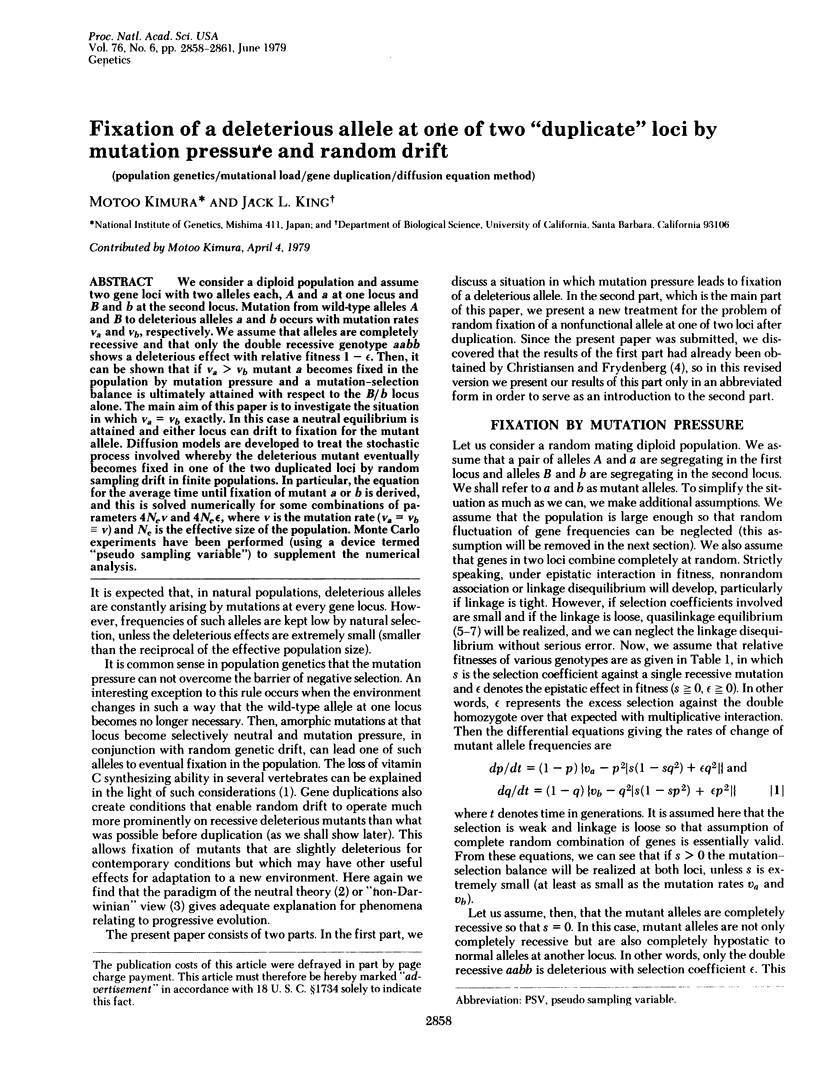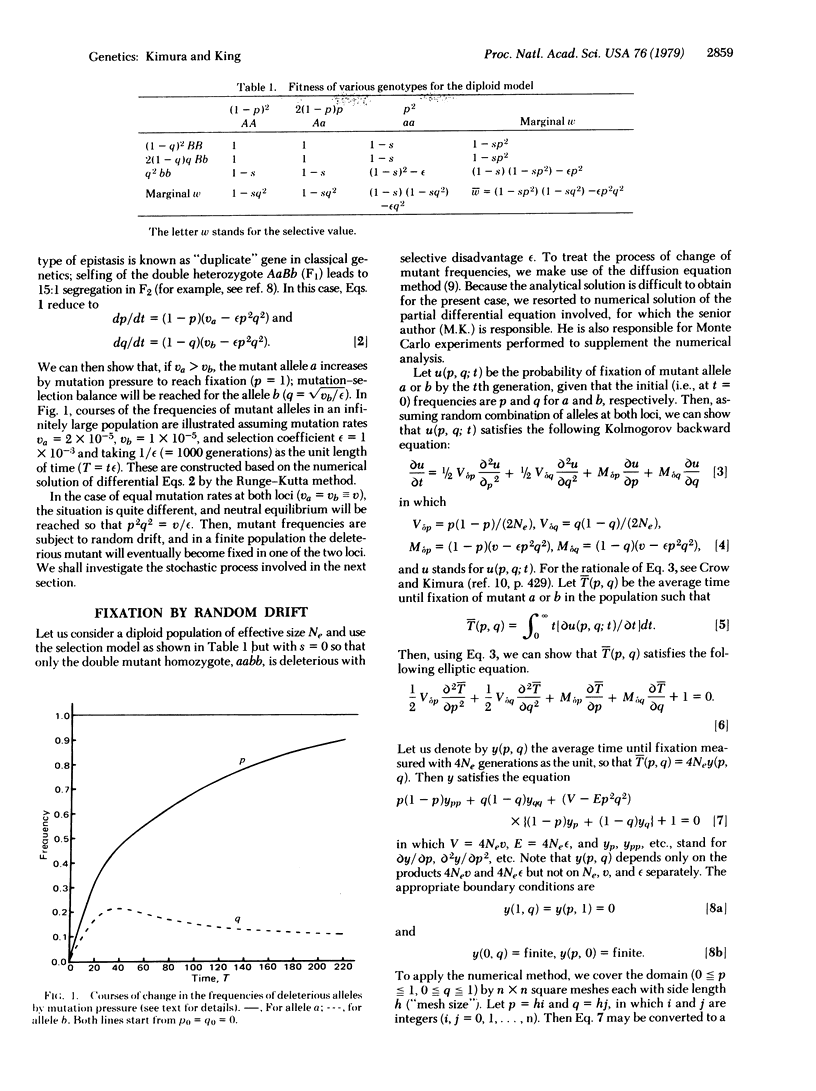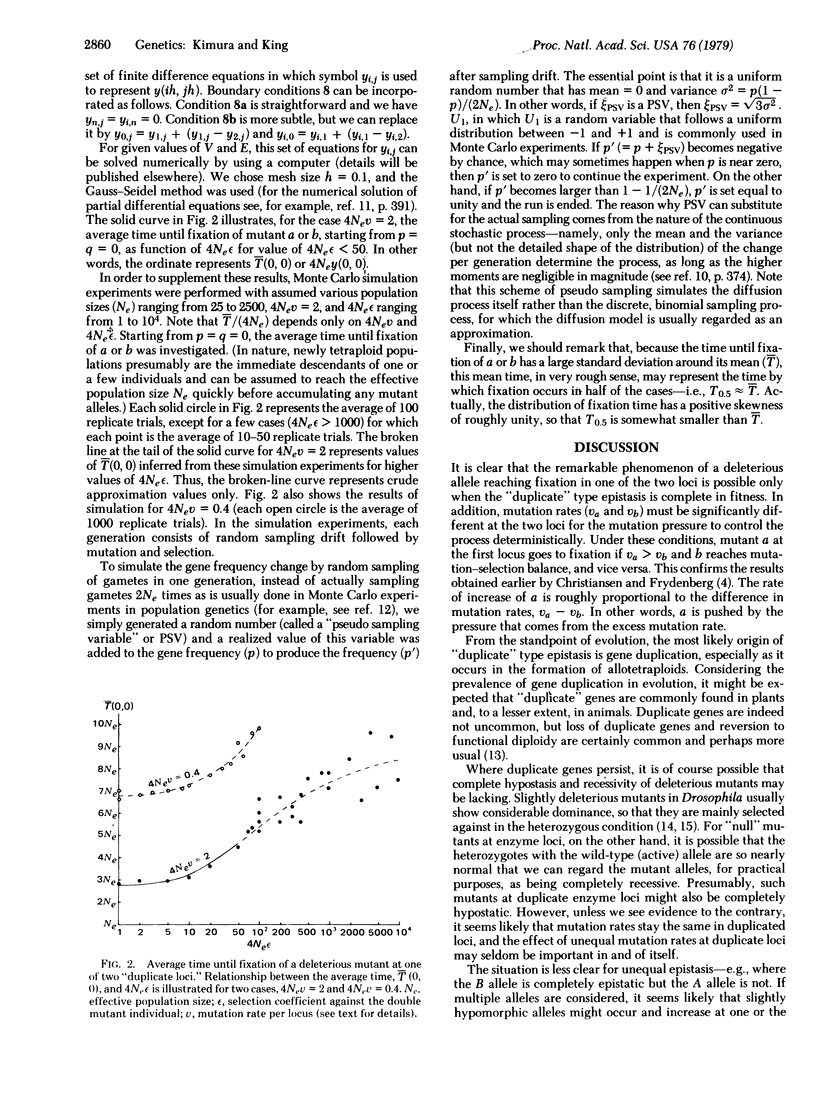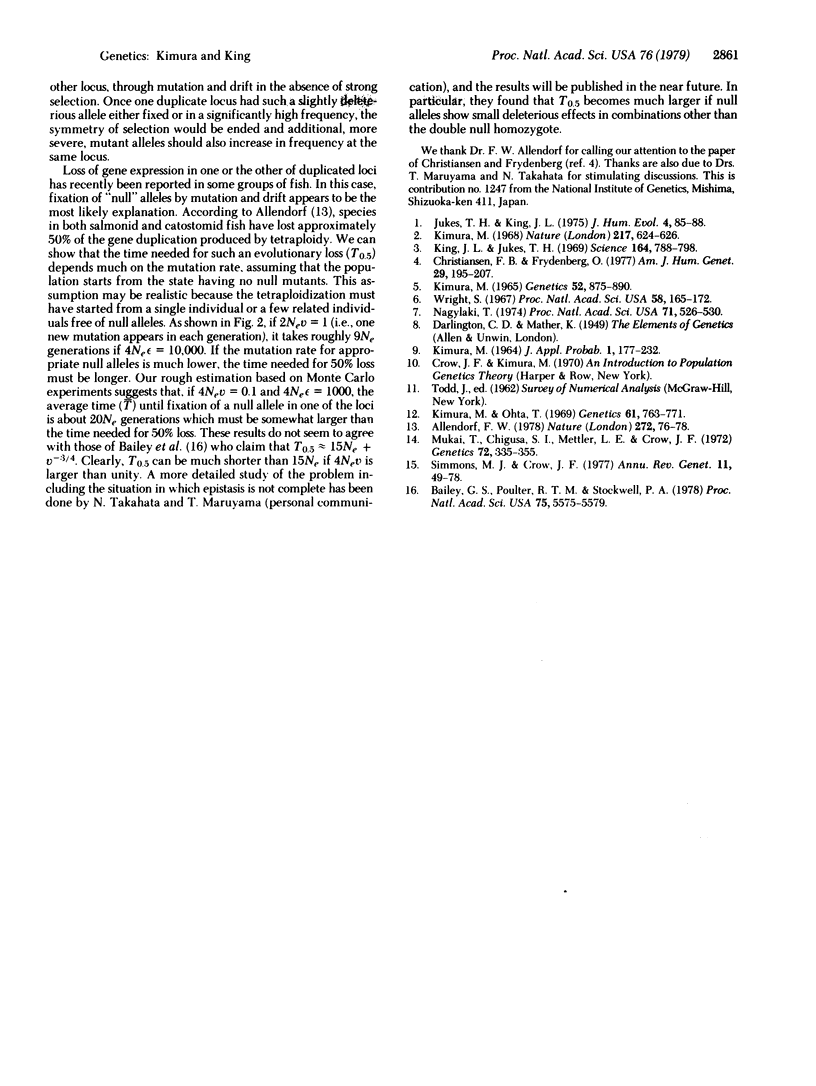Abstract
We consider a diploid population and assume two gene loci with two alleles each, A and a at one locus and B and b at the second locus. Mutation from wild-type alleles A and B to deleterious alleles a and b occurs with mutation rates va and vb, respectively. We assume that alleles are completely recessive and that only the double recessive genotype aabb shows a deleterious effect with relative fitness 1-epsilon. Then, it can be shown that if va greater than vb mutant a becomes fixed in the population by mutation pressure and a mutation-selection balance is ultimately attained with respect to the B/b locus alone. The main aim of this paper is to investigate the situation in which va = vb exactly. In this case a neutral equilibrium is attained and either locus can drift to fixation for the mutant allele. Diffusion models are developed to treat the stochastic process involved whereby the deleterious mutant eventually becomes fixed in one of the two duplicated loci by random sampling drift in finite populations. In particular, the equation for the average time until fixation of mutant a or b is derived, and this is solved numerically for some combinations of parameters 4Nev and 4Ne epsilon, where v is the mutation rate (va = vb = v) and Ne is the effective size of the population. Monte Carlo experiments have been performed (using a device termed "pseudo sampling variable") to supplement the numerical analysis.
Full text
PDF



Selected References
These references are in PubMed. This may not be the complete list of references from this article.
- Allendorf F. W. Protein polymorphism and the rate of loss of duplicate gene expression. Nature. 1978 Mar 2;272(5648):76–78. doi: 10.1038/272076a0. [DOI] [PubMed] [Google Scholar]
- Bailey G. S., Poulter R. T., Stockwell P. A. Gene duplication in tetraploid fish: model for gene silencing at unlinked duplicated loci. Proc Natl Acad Sci U S A. 1978 Nov;75(11):5575–5579. doi: 10.1073/pnas.75.11.5575. [DOI] [PMC free article] [PubMed] [Google Scholar]
- Christiansen F. B., Frydenberg O. Selection-mutation balance for two nonallelic recessives producing an inferior double homozygote. Am J Hum Genet. 1977 Mar;29(2):195–207. [PMC free article] [PubMed] [Google Scholar]
- Kimura M. Evolutionary rate at the molecular level. Nature. 1968 Feb 17;217(5129):624–626. doi: 10.1038/217624a0. [DOI] [PubMed] [Google Scholar]
- Kimura M., Ohta T. The Average Number of Generations until Fixation of a Mutant Gene in a Finite Population. Genetics. 1969 Mar;61(3):763–771. doi: 10.1093/genetics/61.3.763. [DOI] [PMC free article] [PubMed] [Google Scholar]
- Kimura M. Attainment of Quasi Linkage Equilibrium When Gene Frequencies Are Changing by Natural Selection. Genetics. 1965 Nov;52(5):875–890. doi: 10.1093/genetics/52.5.875. [DOI] [PMC free article] [PubMed] [Google Scholar]
- King J. L., Jukes T. H. Non-Darwinian evolution. Science. 1969 May 16;164(3881):788–798. doi: 10.1126/science.164.3881.788. [DOI] [PubMed] [Google Scholar]
- Mukai T., Chigusa S. I., Mettler L. E., Crow J. F. Mutation rate and dominance of genes affecting viability in Drosophila melanogaster. Genetics. 1972 Oct;72(2):335–355. doi: 10.1093/genetics/72.2.335. [DOI] [PMC free article] [PubMed] [Google Scholar]
- Nagylaki T. Quasilinkage equilibrium and the evolution of two-locus systems. Proc Natl Acad Sci U S A. 1974 Feb;71(2):526–530. doi: 10.1073/pnas.71.2.526. [DOI] [PMC free article] [PubMed] [Google Scholar]
- Simmons M. J., Crow J. F. Mutations affecting fitness in Drosophila populations. Annu Rev Genet. 1977;11:49–78. doi: 10.1146/annurev.ge.11.120177.000405. [DOI] [PubMed] [Google Scholar]
- Turner A. G., King C. H., Craddock J. G. Measuring and reducing noise. Hospitals. 1975 Aug 1;49(15):85-6, 88-90. [PubMed] [Google Scholar]
- Wright S. "Surfaces" of selective value. Proc Natl Acad Sci U S A. 1967 Jul;58(1):165–172. doi: 10.1073/pnas.58.1.165. [DOI] [PMC free article] [PubMed] [Google Scholar]


